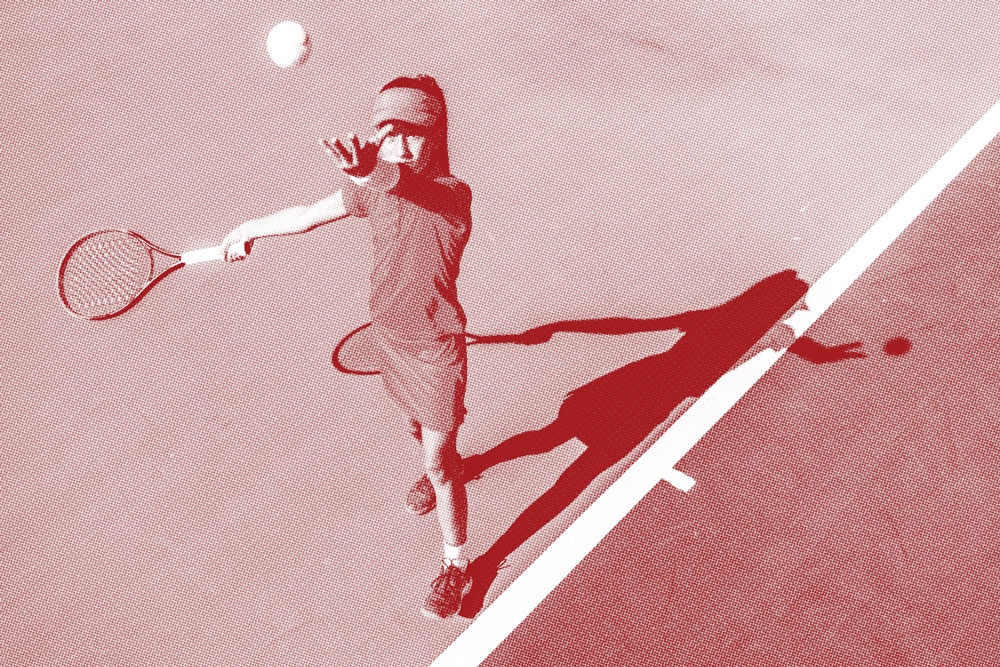Rankings in orange circles compare this sport with nine other sports offered for this gender before customization – meaning each of the three health categories is given an equal one-third weighting. The ranking is comprised of data collected or developed from various sources (75% of score) and expert opinion (25% of score). The healthiest sports in each of the three categories – physical activity, safety and psychosocial benefits – and in each data measurement are ranked No. 1. Note: Some sports did not have significant differences between each other in the data. Learn more about our methodology.
7th
out of 10
Physical Activity
Expert Opinion Rank: 5th Out of 10
Key Characteristics: Tennis physical activity at practices ranks seventh among the 10 girls sports studied by North Carolina State University. Tennis has 35.7 percent vigorous activity; the 10 girls sports average 39.6 percent. Thirty-seven percent of tennis practice time focuses on skills compared to 14 percent on fitness.
1 North Carolina State University research observing high school athletes in North Carolina, 2017-18.
1st
out of 10
Safety
3.3
Injury Rate2(2nd out of 10)
5%
Injury Time/Loss3(1st out of 10)
0
Catastrophic Rate4(T-1st out of 10)
5%
Injuries Requiring Surgery5(7th out of 10)
0
Concussion Rate6(T-1st out of 10)
Expert Opinion Rank: 2nd Out of 10
Key Characteristics: Tennis has the second-lowest injury rate among girls sports, according to the National High School Sports-Related Injury Surveillance Study. Elbow and shoulder injuries tend to be the most common ailments, often due to overuse. Tennis players miss the least amount of time due to injury among the evaluated girls sports.
2 Injury rate per 10,000 exposures, National High School Sports-Related Injury Surveillance Study, 2016-17.
3 Percentage of all injuries resulting in greater than three weeks of time loss from the sport, National High School Sports-Related Injury Surveillance Study, 2016-17.
4 Non-fatal catastrophic injury/illness rate per 100,000 exposures, National Center for Catastrophic Sport Injury Research, 1982-2016.
5 Percentage of all injuries requiring surgery, National High School Sports-Related Injury Surveillance Study, 2016-17.
6 Concussion rate per 10,000 exposures, National High School Sports-Related Injury Surveillance Study, 2016-17.
4th
out of 10
Psychosocial
Aspen Psychosocial Survey7
3.59
Personal Social Skills(6th out of 10)
2.34
Cognitive Skills(9th out of 10)
3.688
Goal-Setting(4th out of 10)
3.667
Initiative(10th out of 10)
3.686
Health(5th out of 10)
1.356
Negative Experiences(1st out of 10)
Substance Abuse
Cigarette Use8
9.1%
(5th out of 10)
Binge Drinking9
17.6%
(4th out of 10)
Marijuana Use10
13.7%
(2nd out of 10)
Academic Achievement
Cut Class11
25.6%
(3rd out of 10)
A/A- Student12
59.7%
(1st out of 10)
Graduate From College13
86.7%
(1st out of 10)
Psychological health14
How We Define Our Metrics
4.13
Self-Esteem(T-5th out of 10)
2.1
Fatalism(3rd out of 10)
3.9
Self-Efficacy(T-2nd out of 10)
2.76
Loneliness(6th out of 10)
2.05
Self-Derogation(T-6th out of 10)
4.3
Social Support(T-2nd out of 10)
Expert Opinion Rank: T-4th Out of 10
Key Characteristics: Tennis rates seventh among the 10 girls sports in the Aspen Institute/University of Texas psychosocial survey, though the gap isn’t large compared to No. 1 softball. A lack of negative experiences is a strength for tennis. The sport has the highest rate of players who are an A/A- student and expect to graduate from a four-year college, according to Women’s Sports Foundation data.
7 Aspen Institute/University of Texas psychosocial benefits survey of high school athletes nationally, 2018. Scoring ranges from 1-4, with 4 being the best except for the Negative Experiences category.
8 Percentage of high school seniors in the sport smoking cigarettes in the past 30 days. Data from Monitoring the Future Study (2010-15) and analyzed by Women’s Sports Foundation in Teen Sport in America: Why Participation Matters.
9 Percentage of high school seniors in the sport binge drinking alcohol in the past two weeks. Data from Monitoring the Future Study (2010-15) and analyzed by Women’s Sports Foundation in Teen Sport in America: Why Participation Matters.
10 Percentage of high school seniors in the sport using marijuana in the past 30 days. Data from Monitoring the Future Study (2010-15) and analyzed by Women’s Sports Foundation in Teen Sport in America: Why Participation Matters.
11 Percentage of high school seniors in the sport who cut class for a full day in the past month. Data from Monitoring the Future Study (2010-15) and analyzed by Women’s Sports Foundation in Teen Sport in America: Why Participation Matters.
12 Percentage of high school seniors in the sport who have an average grade of an A or A-. Data from Monitoring the Future Study (2010-15) and analyzed by Women’s Sports Foundation in Teen Sport in America: Why Participation Matters.
13 Percentage of high school seniors in the sport who expect to graduate from a four-year college. Data from Monitoring the Future Study (2010-15) and analyzed by Women’s Sports Foundation in Teen Sport in America: Why Participation Matters.
14 Average scores of high school seniors in the sport in psychological health report card. Data for these six categories came from Monitoring the Future Study (2010-15) and analyzed by Women’s Sports Foundation in Teen Sport in America: Why Participation Matters. Scoring ranges from 1-5, with 5 being the best for self-esteem, self-efficacy and social support.



